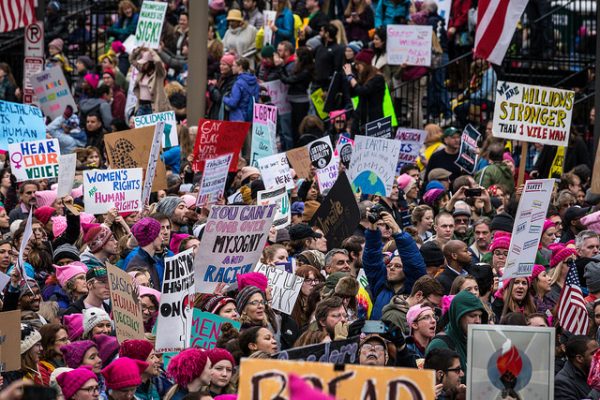
In one of the largest days of protest in recent history, the Women’s March on Washington and its sister marches drew millions of people out into the streets of major American cities to protest the inauguration of Donald Trump and to call for protecting the rights of women, immigrants, and other groups that are likely to be further marginalized by the Trump administration. A look at research on past women’s movements sheds light on the ways that gender shapes when and how women protest, and the important roles they have played in social movement history.
While some argue that women are too diverse to constitute an “issue group,” women’s social mobilization around issues of reproductive, labor, and voting rights has had an important impact on movement culture in the United States. In fact, women’s groups were some of the first to work outside of the existing political system by relying on changing public opinion, rather than voting, as a movement strategy.
- Heather Mckee Hurwitz and Verta Taylor. 2012. “Women’s Cultures and Social Movements in Global Contexts.” Sociology Compass 6(10): 808-822.
- Holly McCammon, Ellen Granberg, Karen Campbell, and Christine Mowery. 2001. “How Movements Win: Gendered Opportunity Structures and U.S. Women’s Suffrage Movements, 1866 to 1919.” American Sociological Review 66(1): 49-70.
- Elisabeth S. Clemens. 1993. “Organizational Repertoires and Institutional Change: Women’s Groups and the Transformation of U.S. Politics, 1890-1920.” American Journal of Sociology 98(4): 755-798.
But women have to contend with a social movement culture that is structured around already pervasive gender norms, which means that the strategies used by women’s movements, and women’s roles in social movements more generally, are in many ways reflective of existing gender norms. For example, women’s movements are more likely to rely on nonviolent strategies, like marches, and women are more likely to be recruited into movement groups to perform nonviolent, gendered tasks, such as canvassing or managing the movement’s social networks.
- Selina Gallo-Cruz. 2016. “More Powerful Forces? Women, Nonviolence, and Mobilization.” Sociology Compass 10(9): 823- 835.
- Karen Beckwith. 2002. “Women, Gender, and Nonviolence in Political Movements.” PS: Political Science & Politics 35(1): 75-81.
Though women are often relegated to the subordinate roles and more menial tasks of political organizing, research finds that these roles have been a key ingredient to social movement success. A historical analysis of the Civil Rights Movement in the U.S. reveals that African American women acted as “bridge leaders,” making the necessary connections between movement leaders and constituents that helped grow the movement. Women have also played a vital role in the U.S. environmental justice movement and drawn on their grievances and experiences as mothers to challenge pollution and toxic waste.
- Belinda Robnett. 1996. “African-American Women in the Civil Rights Movement, 1954-1965: Gender, Leadership, and Micromobilization.” American Journal of Sociology 101(6): 1661-1693.
- Celene Krauss. 1993. “Women and Toxic Waste Protests: Race, Class and Gender as Resources of Resistance.” Qualitative Sociology 16(3):247–62.
- Shannon Elizabeth Bell. 2013. Our Roots Run Deep as Ironweed: Appalachian Women and the Fight for Environmental Justice. University of Illinois Press.
The success of the recent Women’s March is further evidence that when women mobilize, they can be a powerful force for change.

Comments